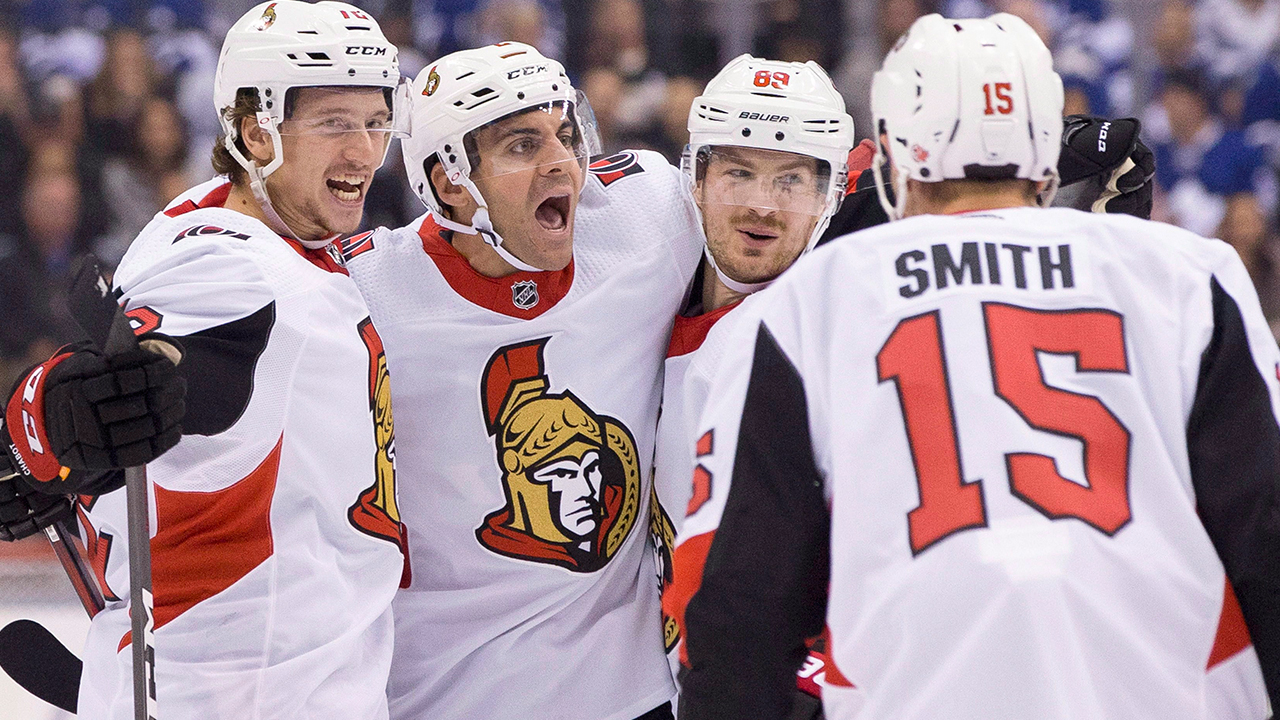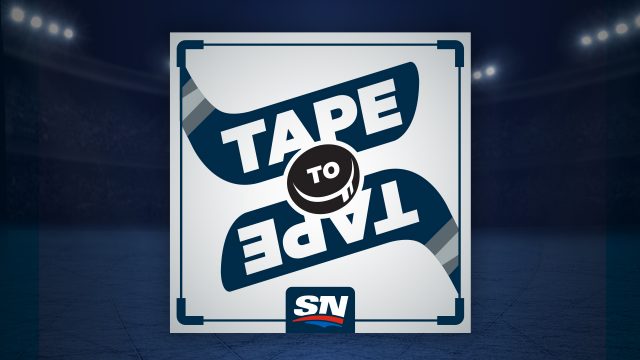
We’re about to hit the two-week mark of the NHL season, and while sample sizes remain small we are starting to get an idea of potential strengths and weaknesses for each team, and an understanding of the kind of opportunity certain players will get.
With the caveat that we are still too early to have any definitive takeaways — the first major benchmark for those kind of declarations is American Thanksgiving in November — here are some surprises, both good and bad, from the first couple of weeks.
The Senators are … fun?
Not only was there so much negative press around the Senators coming into this season, but with a coach who has such a defence-first mentality it really was looking like a long, boring winter was ahead for Ottawa and its fans.
Now we have to step back and reassess.
The Senators may not make the playoffs, but they’re giving fans a reason to show up to the rink. They play with pace and aren’t afraid to pinch, risk be damned, leading to an exciting brand of hockey we didn’t expect from Guy Boucher. This has opened the door for a 20-year-old Max Lajoie to come out of nowhere — rising from a 15-point AHL rookie season in 2017-18 to a seven-point start in his first six NHL games that has him third in scoring at his position league-wide.
And remember how poor the reception was to the Erik Karlsson trade return? Chris Tierney (team-leading eight points) and Dylan DeMelo (five points) are producing at a high level and in the minors Rudolfs Balcers has three goals in three games.
The downside, from a coach’s perspective at least, is that the Sens have the second-worst shot differential (all situations) in the league at minus-69. This has put a lot of pressure on Craig Anderson, who has so far been up to the task with a .925 save percentage in what seems like the 20th bounce back season of his career. Granted, while he’s faced the most shots of any NHL goalie so far (199) he ranks sixth in high-danger shots faced — and 14th when taking just 5-on-5 shots into consideration.
Great goaltending, lots of shots and back-and-forth play, high-performance young players and promise from guys they picked up in a blockbuster trade. No one saw this start coming for the 3-2-1 Ottawa Senators.
Ryan Dixon and Rory Boylen go deep on pucks with a mix of facts and fun, leaning on a varied group of hockey voices to give their take on the country’s most beloved game.
Coyotes have lost all of last season’s progress
Completely the opposite of Ottawa, Arizona came in with hopeful expectations after the way the team finished last season. From Jan. 1 onwards, the Coyotes were 20-14-7 which was still ninth in the Western Conference but vastly improved from their basement start. On top of that, Antti Raanta was the league’s best goalie in the second half and generated speculative Vezina buzz as recently as two weeks ago.
But through four games there are some disturbing developments, the top one being Arizona is the only team that hasn’t scored an even-strength goal yet and they’ve been shutout in three of their four games.
Vinnie Hinostroza was one of their hopeful breakout candidates, but he’s pointless so far and has been demoted to the fourth line. Nobody on the team has more than a single point and Alex Galchenyuk hasn’t gotten into the lineup yet. He’s skating in a non-contact jersey and is still out with a lower-body injury.
Arizona didn’t get its first win until Game 12 last year, but had 26 goals in their first 11 games at least.
There is some reason to be optimistic a positive course correction is on the way. The Coyotes’ plus-38 5-on-5 shot differential is the third-best in the league and their 90.91 PDO is the worst. The defence has also been a big positive, allowing a league-low 23.3 shots against per game and a 2.25 GAA.
But the expectation is this year’s start would be much smoother.
There are two ways to look at this. One is that the offence is bound to recover because of course you’re going to start scoring at even strength at some point. and when that happens, because the defence and goaltending is already performing so well, a surge up the standings is likely.
The other way of looking at it is that the offence in this lineup just isn’t good enough, and although progression is likely, it won’t be enough to make a playoff push. Are you a glass half full or half empty kind of person?
Wild are giving up a ton of shots against
The days of Jacques Lemaire are long, long gone.
But even without the NHL’s neutral zone trap godfather around, the Wild have traditionally been a pretty good defensive team, led by Ryan Suter’s monster minutes played, although the standard has been slipping for a few seasons.
Minnesota has been porous on defence so far — Monday’s 4-2 loss to the Predators was the first time they held an opponent to fewer than 30 shots this season, and just the second time they came in under 40 shots against. The Wild average a league-high 39.4 shots against per game.
On the blue line, the top pair of Ryan Suter and Matt Dumba remains a force and they’re both top 17 in average ice time. But none of the other defencemen has a positive 5-on-5 shot differential and the third pair of Greg Pateryn and Nick Seeler is a particular sore spot.
Devan Dubnyk has saved the Wild from utter destruction so far with a stellar .934 save percentage, but the defence needs to tighten up. If that doesn’t happen, the Wild would be a prime candidate for some major changes under new GM Paul Fenton.
Hurricanes are a threat on offence
Since the dawn of time, Carolina has been a favourite pre-season playoff dark horse pick, but they have the longest active playoff drought in the NHL stretching back nine years.
Is this finally when they break through?
Some early trends are certainly positive, mostly their offence which had been an area that held the team back in years prior. Previously under Bill Peters, the Hurricanes would have top-10 Corsi measures, but a shooting percentage that ranked in the bottom half of the league. Today their 3.83 goals per game are seventh-highest in the league and it comes with a 9.04 shooting percentage that would rank on the high end of the league if it was the end of the season, but is not an unsustainable number on the surface.
Carolina’s goaltending has been even worse in recent seasons — their team save percentage has been last or second-last three years running despite having one of the better defences. And although Curtis McElhinney has been a great story in the past couple weeks, winning all three of his games since being picked up on waivers, it’s still a trouble area for the ‘Canes. Neither McElhinney or Petr Mrazek has a save percentage over .900 even though Carolina’s defence again has shut down opposing offences, averaging just 25 shots against per game.
Goaltending is the area to watch in Carolina, and one they could try to improve as the season progresses. But if the offence finally starts churning with rookies Warren Foegele, Andrei Svechnikov, and vets such as Micheal Ferland and Teuvo Teravainen surrounding Sebastian Aho’s star breakout season with capable production, it might finally happen for the Canes.
Play the Sportsnet Fantasy Hockey Pool for your chance to score big with over $30,000 worth of prizes to be awarded!
Ducks have been badly outplayed
We knew that if John Gibson stayed healthy he had the potential to take a crack at the Vezina Trophy, but at this rate if the Ducks end up making the playoffs he’ll be deserving of the Hart Trophy.
It’s important to note that Anaheim is more banged up than any team: Ryan Getzlaf, Corey Perry, Ondrej Kase, Patrick Eaves are all out and Ryan Kesler has missed time. So when you learn Anaheim has the worst 5-on-5 shot differential in the NHL (minus-54) you have to put it into this context.
However, this is a team whose GM said needed to be faster this season. That need was obvious in Round 1 of the Stanley Cup Playoffs, where the Ducks were steamrolled by the much quicker San Jose Sharks, a team that found ways to adapt its own style. No big additions were made over the summer in Anaheim to shift towards speed and the coach remains the same, so it’s at least concerning to see the Ducks off to this start.
Gibson has been stellar though, posting a .944 save percentage and 3-1-1 record. He’s the only reason Anaheim’s slow start hasn’t really been in the spotlight.
The three 0-for power plays
Three teams have still not converted on the power play: Florida, Los Angeles and Vegas. Maybe we didn’t expect any of them to produce at the kind of rate Toronto or Dallas currently are, but these were supposed to be good units.
From Jan. 1 onwards last season, both Vegas and Los Angeles had top 10 power plays while Florida was 14th. The Panthers, in fact, started the season with a five-forward first power-play unit, but that has quickly been abandoned.
We can’t stress enough how important it is to be able to convert on at least one out of every five power-play opportunities in today’s NHL. In 2011-12, three teams finished with a power-play success rate of 20 per cent or above — that number increased to 18 teams last season.
Odds are these units will start firing, but it is surprising to see all of them shut out through two weeks.


Be the first to comment